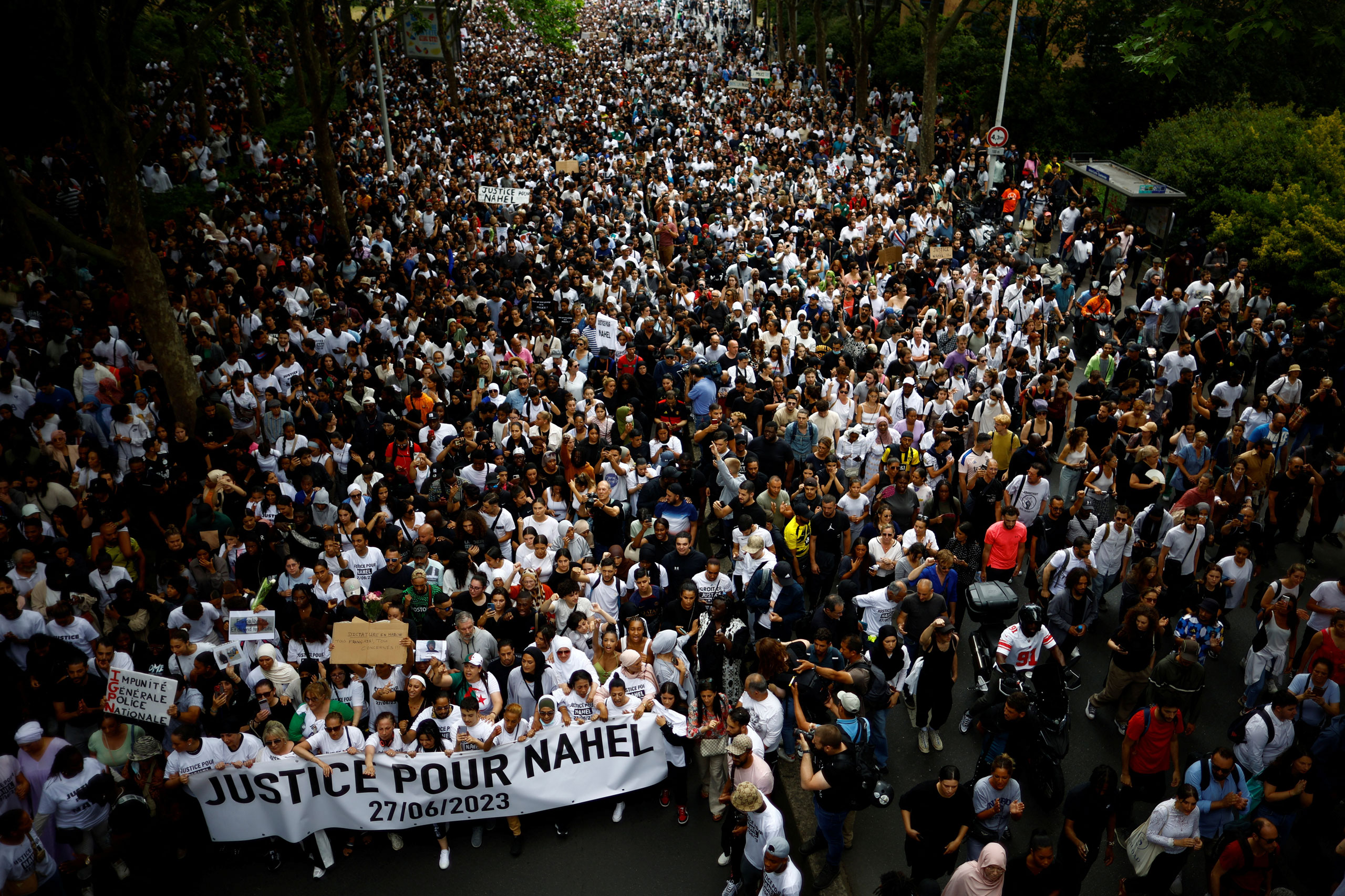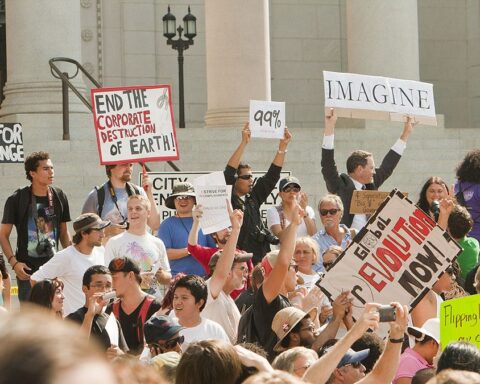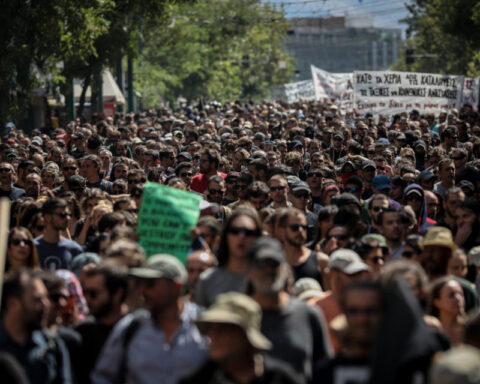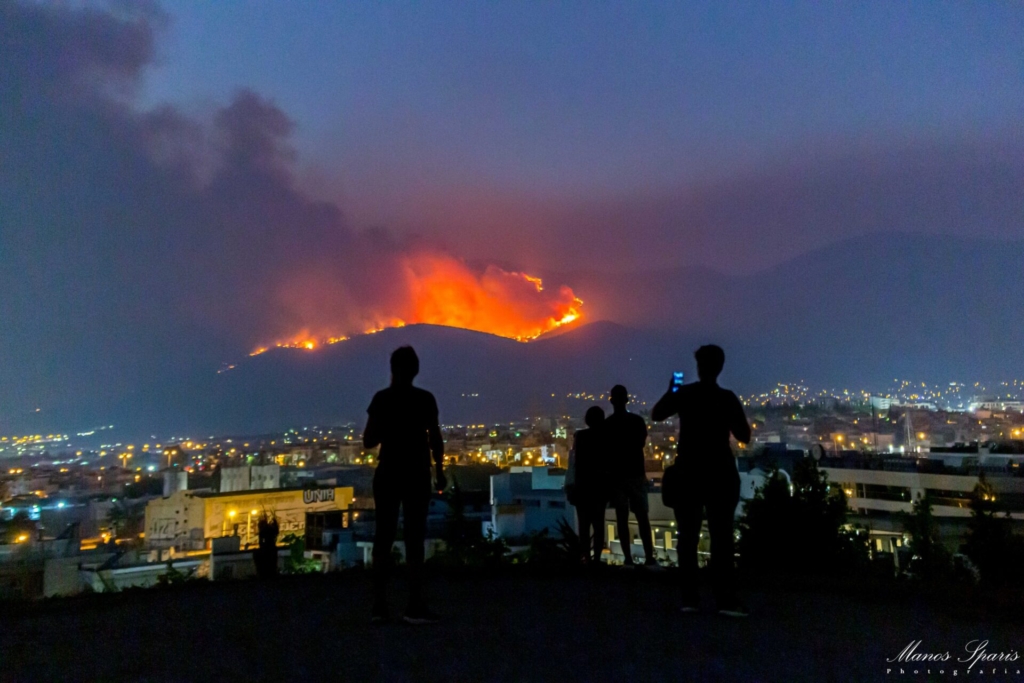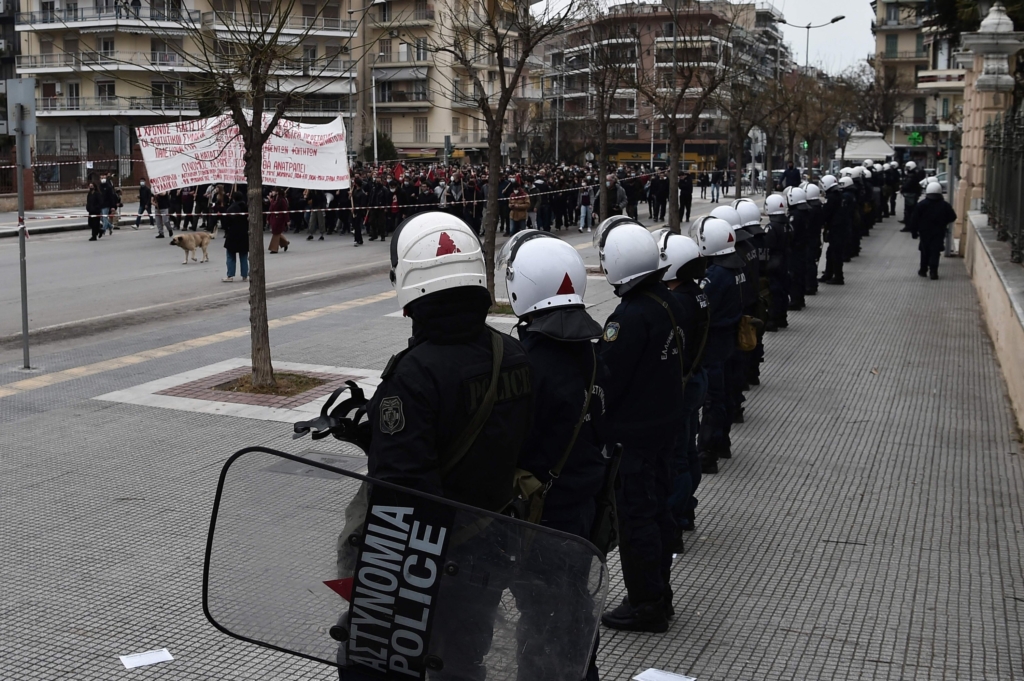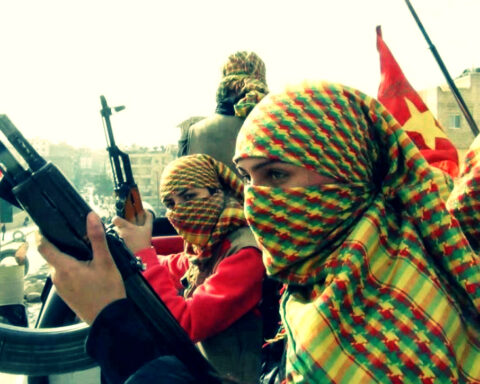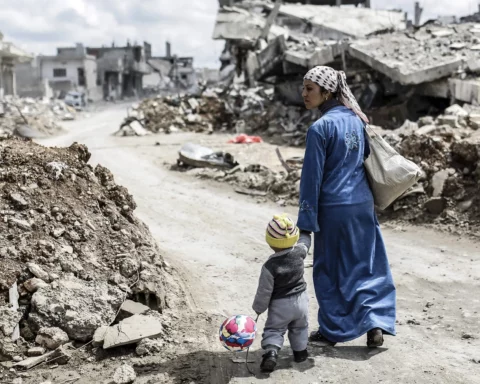On June 27, 2023, just a few weeks after the last of the giant demonstrations against the “reform” of the pension system, French society experienced a powerful explosion of youth revolt engulfing the whole country for several days. It was set off by the police murder of seventeen-year-old Nahel Merzouk, who was driving a car without a license in a Paris banlieue (suburb). He was killed in the course of a police stop with a bullet in the heart. How did we move from a large-scale movement against a governmental ”reform” aimed at adding two years to the minimum retirement age and set to increase the impoverishment of retirees, to an explosion against police violence?
We should start by looking back at the abrupt end of the movement against the “reform.”1 After a series of demonstrations called by the unions, after a growing number of strikes which did not succeed in spreading or increasing their duration, the perspectives for struggle were increasingly reduced. Fatigue and lassitude finally took over, along with a feeling of powerlessness to change the balance of power favoring a government supported by capitalist forces and well-off sectors of society. The strikes, though involving active and determined workers, never generalized to a level capable of blocking the functioning of society. Repeated demonstrations, the energy and creativity of the demonstrators, the use of blockades and sabotage, the formation of networks of struggle collectives, the links forged between students and workers, and the sympathy of the majority of the working class—all these were not enough to sustain the dynamic and make it possible to pass to a more offensive level of struggle. Although very popular, the active movement remained the effort of a minority. The successive demonstrations only revealed to the eyes of the participants the impasse which the union forces sought increasingly to hide with triumphalist speeches, an irritating demagoguery. The movement was finally exhausted, and the activism of minorities could do nothing about it.
The clear end of the movement did not efface the collective consciousness with a profound and massive rejection of the neoliberal line of present-day capitalism and its more and more authoritarian modes of governing. This rejection did not succeed in finding its way to become a decisive force of opposition. The rejection it expressed is therefore still there, so the defeat was not experienced as the defeat of the collective and its subversive energy. The general feeling is summed up by a phrase given different emphases and nuances: “We have lost but they haven’t won. The fight will start again, sooner or later.”
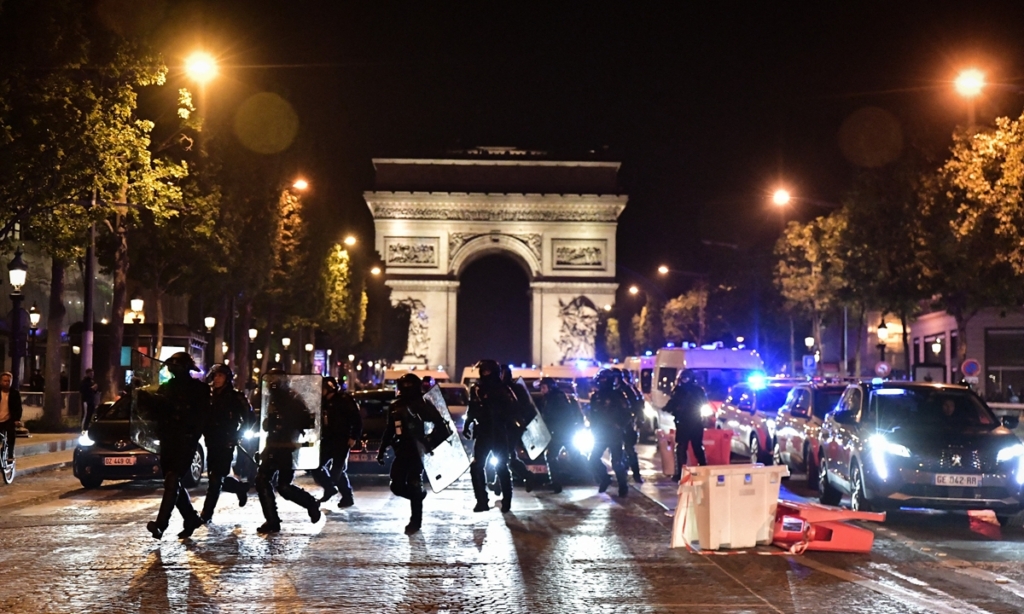
This disgust with the political class and its propagandists, with the increasing repression of all forms of opposition, with general unhappiness, social impoverishment, and growing class inequality provided a context for the explosion of revolt against police violence among young people in working-class neighborhoods. This is racist violence that is a daily experience in the neighborhoods that are parking places for young people—poor and for the most part excluded from the world of work and social life in general—who, though of immigrant origin, are often “French” for one or two generations. Police violence and its racist dimension have a long history in France, with roots deep in the class conflicts marking the origin of industrial capitalism in France and the repression of successive groups of immigrants who have long composed the working class. To that must be added the consequences of a badly digested colonial heritage and the nationalist rebellions of the postwar period. More recently, police repression has returned to the forefront of social life with the movement of the Gilets Jaunes (Yellow Vests), of whom more than 3,000 were wounded and mutilated by the police. Now it is extending to all forms of opposition to the social order, including struggles against the destruction of the environment. These have been systematically criminalized and confronted by the police. This was notably the case recently at Sainte-Soline, in the center-west of France, where 30,000 people, mobilized to block an agricultural-industrial project of privatizing water resources, came up against militarized police forces that produced dozens of wounded and left two young people in critical condition.
It is hard to analyze an event like the banlieue youth revolt, characterized by spontaneity and improvisation. Clearly, the spontaneity is the fruit of a pre-existing situation, and the unpredictable was obviously to be predicted. But this revolt took unexpected forms and it is difficult to see its links with earlier struggles. Karl Marx once suggested there are social revolts that are like earthquakes—it is pointless to try to predict them, and even more to dissect them or to set them in pre-established schemas and political projects constructed in advance. Nonetheless, if one is an enemy of the existing order, one cannot dissociate these events from the current crisis of society and one is inevitably led to solidarity with them, even if that solidarity is purely abstract and impossible to make concrete, even if these revolts do not open a perspective on radical social change. Perhaps they are signs of something different on the horizon. Only the future will tell and provide perspective. Meanwhile, some facts can help us understand the circumstances of the explosion.
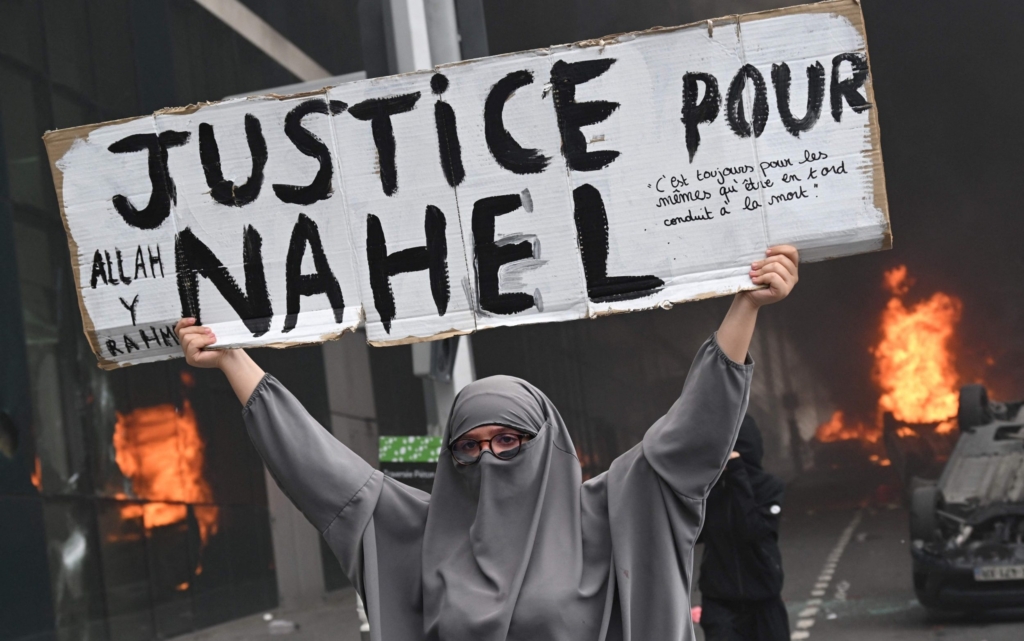
The recent revolt of young people in working-class neighborhoods has surpassed the similar revolts of 20052 in intensity and breadth. While at that time, the rebellion went on for three weeks, this time it lasted only a few days, but involved more of the country; it reached many little provincial cities traditionally considered “calm” and not only the big urban centers. The revolt was not confined to neighborhoods outside the city proper, the suburbs, but expanded into the urban centers. As a Communist city official in the Paris region observed, “Symbolically speaking, this went far beyond what happened in 2005.”3 Indeed, the explosion of anger and rage focused above all on “symbols of the state” and in particular on the so-called forces of order, the police and the gendarmerie (military police), viewed in any case by the young of these neighborhoods as the heart of the state’s repressive control. Contrary to what the government and its propagandists want people to think, schools and civic institutions (libraries, cultural enters) were not the most commonly attacked locations—even though for many kids these places are centers of power, places that they assimilate to others where they are rejected, devalued, excluded. Among the 2,500 public buildings set on fire or damaged in more than 500 urban areas there was a high number of police stations and gendarme posts, compared to a small number of schools (168). Gun stores were pillaged here and there by people who took hunting rifles and other weapons, a new fact testifying to the increased level of violence in clashes with the authorities. Another novelty: a hundred mayor’s offices were attacked, along with elected politicians, occasionally in their private residences.
Institutions of repression and control are replacing the collapsing institutions of the welfare state. This evolution has been visible for years: the increase of repression is the counterpart to the willful and continuous dismantling of the welfare state. The realization of this fact was central to the revolt of the Gilets Jaunes and more recently to the movement against the pension “reform.” To quote Marx once again, the forms of political power tend to correspond to the forms of the capitalist exploitation of labor. The latter are increasingly violent, characterized by the precarity, fragility, and harshness of working conditions and low wages. The forces of repression are hated in the poor neighborhoods, where young people are abandoned to “uberized” jobs. They are, so to speak, a world of proletarians outside of the classical proletariat. The police, on the other hand, are always supported by the bourgeois classes (naturally), by shopkeepers, and also by workers who are afraid of losing the little they still have and who are attached to a “balanced” past, mythologized and longed for, which will not return.
The modern French state (and in this it is setting an example for Europe) is increasingly based on institutions dealing in open violence. The police have become a state within the state. Even worse, recent developments suggest that the branches of the police charged with repression on the streets somehow lost their connection with the top of the institution, with the hierarchy of command. Instead, they are very much under the control of the police unions whose links with the extreme right are by now well known. This development is producing unease even among the ruling elite, the leading liberal press, and the judiciary. The same development can be seen in other sectors of the state: for instance, everyone knows (even if it is not openly said) that the Minister of the Interior, in charge of the police, cannot be nominated without the agreement of the police unions. Similarly the Minister of Agriculture and Ecological Transition is “chosen” by the main agricultural-industrial firms, as the energy minister is “chosen” by the bosses of the nuclear industry. One could say that we are progressing towards transparency about the real nature of democracy.
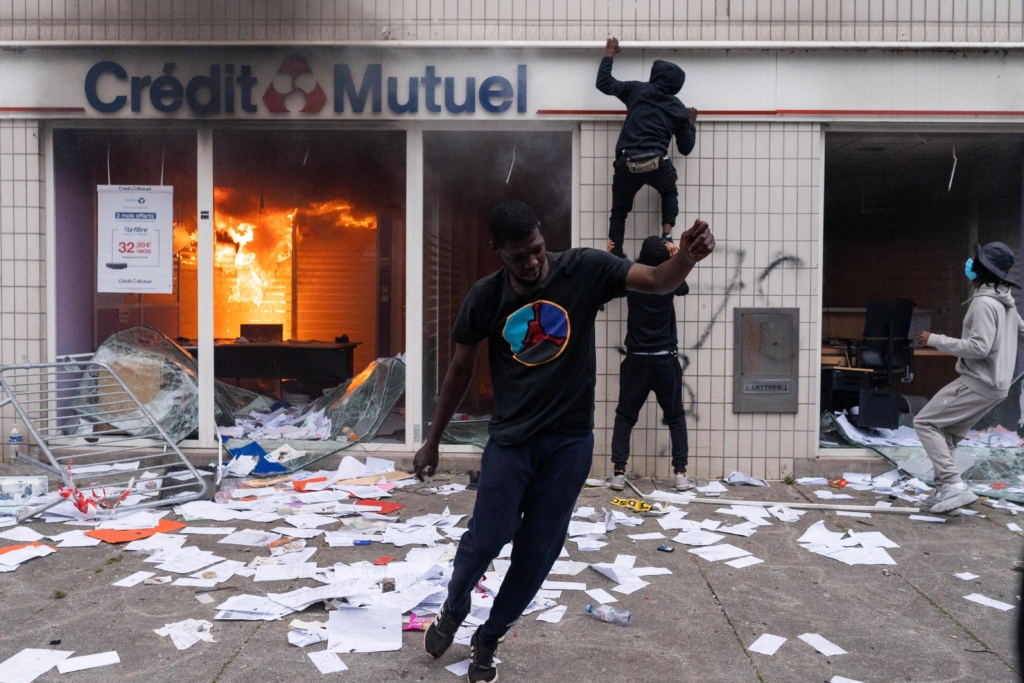
There is also the question of social immiseration. The explosions of revolt brought with them a lot of looting—much more than in 2005. In many places, after the kids had broken shop windows and stolen some candies it was their mothers and grandmothers who came to stock up on noodles, sugar, flour, oil, and canned food—something that tells us a lot about the period we are entering in our supposedly affluent society. These revolts were also, in part, hunger riots.
The young people who ran free in the streets were for the majority very young, between twelve and seventeen, younger than in 2005. There were over 3,000 arrests, with more than 1,300 youths processed through expedited trials, and more than 700 individuals sentenced to serious prison terms, 8 months on average.4 Thus the imprisoned surplus population continues to grow. A few big-city suburbs and neighborhoods saw a momentary mix of kids in revolt and those who have been drawn for years to clashes with the police in demonstrations, the so-called black bloc. But for the most part these remained two worlds separated by ideology. I’ve heard of the reply (real or made up) of a young rebel to a black bloc member: “You get yourselves arrested because you are engaged in politics, we do it because we are young!” On the other hand, given the form of the revolt, its spontaneity and suddenness, and the places in which it broke out (streets and blocks), workers generally expressed no solidarity. Here and there the intervention of teachers or local civic or cultural workers made it possible to discuss things, to “reason with” the young people’s rage. Discussions of the event certainly took place in workplaces and among families at home, but without any particular impact. One wonders to what extend the “family” institution still exists within the world of proletarians which is decomposing or imploding. We know that the number of single-parent families continues to increase, especially those headed by single mothers, for the most part unable to pay attention to the children thanks to the struggle for daily survival: long hours of work and transportation, debilitating fatigue. Macron’s speech demanding that families “control your children,” visibly had no relation to reality.
However, in the neighborhoods where the revolts broke out, people openly expressed a clear understanding of the situation and a critique of the police. The sense that the government lies, that the police are out of control and defend the interests of the well-off, is generally shared. People reject state violence, which is seen as violence against the working classes—even if at the same time people demand more from the state. A contradiction which reveals the present level of social consciousness, far from understanding that the repressive state is the only state possible in the present period of capitalism.
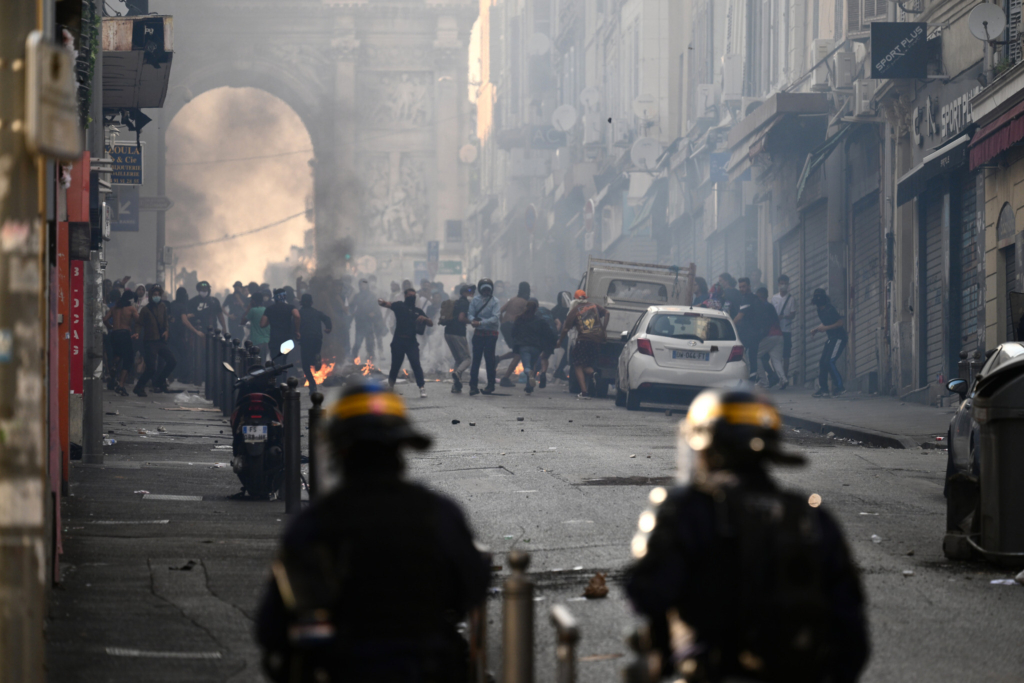
Groups thinking of themselves as “radical” saw these revolts as the basis of a “revolutionary” situation, which should be developed and “politicized.” Given the circumstances, in particular the repressive force of the modern state, to incite fourteen-year-olds to pursue this path of confrontation, ignoring their weaknesses, seems irresponsible. Much wiser were the words of a woman from a neighborhood association who, because she didn’t feel like having any arguments to calm the young people down, simply advised them: “Take care, don’t put yourself in danger.” Because they really are in danger, before and during the revolt. It is already a lot to take seriously the reasons for their anger.
Practically all the discourse of the old left, in contrast, demonstrates incomprehension of the events, a denial of the condition of this abandoned youth who “is angry at everyone, at the whole world,” as someone said. It is true that rage against the world does not necessarily lead to the idea that another world is possible. And there is a big difference from the social movement that preceded it, where this idea was present even if it could not be realized. The fact is that a social explosion without results or immediate perspectives is disturbing. Thus the renowned thinker Edgar Morin (one of the last nonconformist left intellectuals) who wrote about the events without touching on the material conditions—the daily violence—that provoked them invoked jihadism to suggest a nihilist quality. It’s an easy and perverse move to make, since the great majority of the young people involved are of immigrant origin: “Unlike the jihadists motivated by hatred for unbelievers, we see here the opposite of faith, a sort of nihilism. Beyond rage at the death of Nahel M. it seems that the intoxication of smashing everything and setting fires was lived as a dark festival by those who carried it out.”5 The threatening image of the (twelve to seventeen-year-old !?) “barbarian” thus discreetly replaced the figure of the “jihadist,” a discursive development that deserves some discussion. In any case, Morin concluded that “the events can be read in two different ways: as revealing the deep evil that is eating way at our society, or as an attack of adolescent madness, collective and transitory.” The “profound evil of our society” seems the correct reading to me.
To conclude, with a few notes on the attitude of political and union forces: Here things are at the moment somewhat confused. The near totality of political forces in France defend the liberal principles of capitalism. Only the new party France Insoumise takes a position against this orientation, with the weak support of several marginal Socialists (the majority have signed on to Macron’s neoliberal project) and the Greens, themselves divided between “realists” and “radicals.” In contrast, the decaying Communist Party, currently run by a neo-Stalinist clan, patriotic and productivist, holds demagogic ideas about “order” and the police, regarded as “order workers.” The political class as a whole is engaged in a ferocious struggle to put France Insoumise , now the principal enemy of the liberal consensus, beyond the pale. For the time being, this party has been behaving in a rather dignified way within bourgeois politics: it has defended the young arrestees and demanded a “democratic reconstruction” (?) of the police. That it asked angry young people not to destroy social goods (schools, social centers, libraries, health centers, public transportation) without mentioning the attacks on the police and their buildings has been very badly taken by other political organizations. This might explain, in part thanks to electoralist demagoguery, why they are far from power. What would they do if they were in the government? There is also the fact that this new party is composed of people coming from civil society, militants involved in the recent struggles, neighborhood activists. It is a party motivated by the strong feeling of social conflict that has been at work in France for years. However, even given young people’s disgust for politics, it is likely that this attitude will be rewarded in the next elections. The unions have also been prudent in their reactions. The biggest ones (CFDT, CGT) and the more combative one (SUD) did not condemn the youth; they timidly tried to establish links with their revolt and the general social situation.
A bit of sociological information gives us something to think about: comparing the locations of these revolts with those of demonstrations against the pension “reform” shows an overlap, particularly in the small provincial cities. We can at the very least conclude that the atmosphere of social revolt currently deep-rooted in French society has reached the young people excluded from it. Their need to fight against social injustice, against injustice in general, is an idea whose time has come. Like the recognition that the government lies and that we can’t expect it to improve the situation of the weakest members of society. We should not forget that the recent struggles of the Gilets Jaunes and their insurrectionary spirit remain alive. Everything is there: everything is present, in the memory of the moment.
We have to see what comes next, for better and for worse. The general situation will not be stabilized, austerity will increasingly affect the working classes, the exclusion of the young will continue and even be more severe. The forms of political representation will continue to discredit themselves, parliamentary democracy will take more authoritarian forms. Other events, movements, struggles will come. History goes on.
__________
Written by Charles Reeve
Source: Brooklyn Rail
- See Charles Reeve, “Letter from Paris”, https://brooklynrail.org/2023/04/field-notes/Letter-From-Paris-1
- In 2005 revolts in French banlieues broke out on October 27 in response to the deaths of two adolescents, electrocuted within a power installation while attempting to escape a police patrol.
- The mayor of Grigny, L’Humanité, June 30, 2023.
- Figures from the Ministry of the Interior, July 5, 2023.
- Edgar Morin, “La crise française doit être située dans la complexité d’une polycrise mondiale,” Le Monde, July 29 2023.
